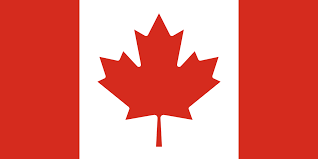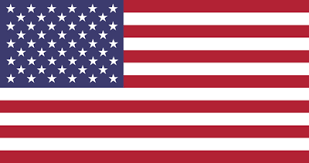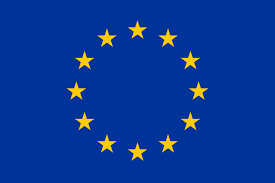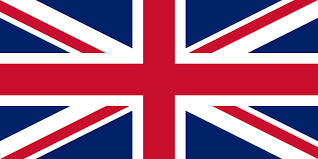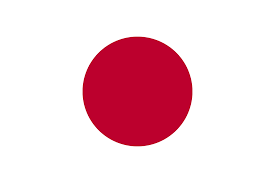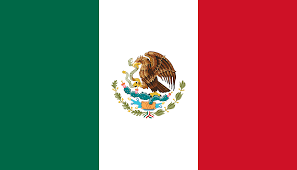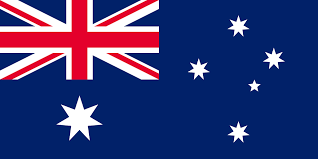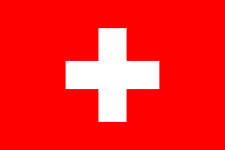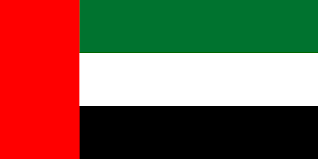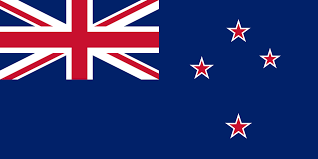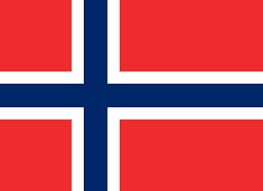FAQs | Frequently asked questions
About us
- What is Ferme Martinette?
- Who are the owners of La Ferme Martinette?
- Are we certified organic?
- Since when do we produce maple syrup?
Commercial policies
- Do we ship internationally?
- What is the processing time for my order?
- How much do you charge for shipping?
- What is the currency used when invoicing?
- Is it possible to return my order?
General information on maple syrup
- What are the 4 classifications of maple syrup?
- How was maple syrup discovered?
- In which part of the world is maple syrup produced?
- What type of maple produces maple syrup?
- How much maple syrup does a maple tree produce?
- What is maple syrup made of?
- What does maple water look like?
- How to harvest maple sap?
- When to harvest maple sap?
- What is Golden Maple Syrup?
- Is maple syrup completely natural?
- Is maple syrup good for health?
- Is maple syrup better than sugar?
- How to consume maple syrup?
- How to store maple syrup?
- What is the shelf life of maple syrup?
- Why are there sometimes crystals in maple syrup?
- How to recover maple syrup that has crystallized?
- How do you know if a maple syrup is expired?
- On what factors does the quality of maple syrup depend?
- Why is maple syrup expensive?
About us
What is Ferme Martinette?La Ferme Martinette is a Quebec family business specializing in the production, processing and marketing of high quality maple products. We produce throughout the year over 185 codes of maple products at our facilities located in Coaticook in Quebec, Canada. Couple in life, parents of 4 grown children and business partners, Gérald and I have been working since 1993 in the production, processing and marketing of agro-food maple products on national and international markets. By introducing another dimension to the marketing of maple syrup and by offering products throughout the year, we have been able to carve out an enviable and recognized place in the targeted markets, more than 85% of whose sales are done outside Quebec. And now, we hope you will enjoy our maple products as much as we enjoy making them! Lisa Nadeau & Gérald Martineau |
Who are the owners of La Ferme Martinette?Lisa Nadeau, CEO | Founder ( Women Owned Business) A graduate of the University of Sherbrooke since 1991, Lisa created maple syrup products and the commercial enterprise to promote and sell her products on national and international markets and on web platforms. Lisa is passionate about fine cuisine and never hesitates to develop her ideas, as she did when she became director of the sales in international markets. With her well-defined entrepreneurial spirit, she brings the creative and innovative side to Martinette Gourmet Maple. Gerald Martineau, Vice-president | Director of production Holding a diploma in Agricultural Management from the Agri-Food Technology Institute of St-Hyacinthe, Gerald graduated in 1985 with the Gold Medal from the Ministry of Agriculture for his academic results. He is responsible for managing the production of maple products. With his great technical expertise and his know-how as a maple syrup producer, Gerald brings the perfect balance to Lisa’s developer side. |
Are we certified organic?YES! Our collection LA FERME MARTINETTE BIO is certified by: ECOCERT CANADA CA-ORG-006 Products that you can find in our organic range: · Organic maple syrup (amber & dark) · Organic pancake & waffle mix (6 flavors available in 250g or 500g) · Organic maple spread · Organic maple jelly · Organic soft sweets · Organic sugar Approximately 12% of Quebec maple syrup is certified organic, in accordance with the Act respecting reserved designations and added-value claims (R.S.Q. c. A- 20.02). Organic standards regulate sugar bush management, plant diversity, fertilization, pest control, tapping, collection and processing of maple water. The specifications submitted to maple syrup farmers is concerned with the stages of maple syrup making, maintenance, farm layout, collection and storage of maple water, as well as with processing maple water, cleaning equipment, storing the finished product and processing maple-derived products. |
Since when do we produce maple syrup?La Ferme Martinette has been producing, processing and marketing maple products since 1993. However, the first production of maple syrup on La Ferme Martinette dates back to 1951. It has now been 3 generations that, each year, the maple grove allows La Ferme Martinette produces premium quality maple syrup. |
Commercial policies
Do we ship internationally?YES! La Ferme Martinette ships its maple products to the United States and internationally. Several delivery options are available. Do not hesitate to do the exercise on our website! https://www.finemapleproducts.com/ |
What is the processing time for my order?It takes 24-48 hours (working days) for processing your order at our facilities before shipment. As we process all our products, shipping is always done from our facilities in Coatocook, Quebec, Canada. |
How much do you charge for shipping?The freight cost we charge you is based on the actual freight cost. Depending on the items in your shopping cart, our website will automatically calculate a delivery cost related to the weight, volume and destination of your order. Several delivery options are then available to you. The costs therefore also vary according to your choice of delivery. |
What is the currency used when invoicing?Our prices are in Canadian dollars (CAD $) and payment is made in Canadian dollars. For an estimate of the cost in your currency, you can select your currency from the options available in the upper right corner of the page. However, your payment will be made in CAD $ and the exchange in your currency will be seen on your credit card statement. |
Is it possible to return my order?You have 24 hours to notify us if you receive damaged merchandise. You can return it to us at your expense if it’s in its original packaging. If the original packaging is in very poor condition and cannot be returned, take photos and send them to us by email. Simply put everything in another box and send it back to us. We will then refund you the total value of the goods within 30 days of reception of the returned product. The shipping costs as well as the return costs will be refund to you after settlement of the complaint that we will have made with the carrier, if applicable. |
General information on maple syrup
What are the 4 classifications of maple syrup?There are 4 categories of maple syrup in Canada: • Golden, delicate taste. • Amber, rich taste. • Dark, robust taste. • Very dark, pronounced taste The paler the maple syrup, the better its quality. The darker it is, the closer its taste will be to caramelized sugar and less to the refined flavor of maple. |
How was maple syrup discovered?The Native Americans from East Canada and North-East of the United-States discovered the pure maple syrup sap and the way to process it into pure maple syrup. This was way before the arrival of the Europeans in North America. Legends about maple are different in each tribe, depending of their region. Some says that dogs were licking the sap from broken maple tree branches, and that gave the idea to the Native Americans to taste it. Some other says that it was by observing a squirrel nibbling a branch and drinking the sap that was coming out of it. The Native American thar was watching the squirrel wasn’t quite sure why the squirrel wasn’t drinking at the water spring nearby. So, he decided to taste it. What a surprise! The sap was a little sweet. Till then, his tribe could only have sugar in the wild fruits. This was a new way to eat something sweet! He was just discovering a tree that cries sugar in crystal tears. Over this, he was also discovering a new medicine to help people live through the cold winter and spring… |
In which part of the world is maple syrup produced?Maple syrup is harvested from the forests of northeastern North America. Quebec is the leading producer of maple syrup. On average, it provides nearly 72% of all world production. Ontario, New Brunswick and Nova Scotia also produce maple syrup. The rest of the world’s production is located in the United States in the states of Vermont, New York and Maine. |
What type of maple produces maple syrup?Among the 10 varieties of maple growing in Canada, 3 are mainly used for the production of maple syrup: sugar maple (Acer saccharum), red maple (Acer rubrum) and black maple (Acer nigrum). Sugar maple is the most used for making maple syrup. It is this variety of maple that is found in our sugar bush located in Coaticook, Quebec. The maple trees give us high quality maple sap every year, which we transform into premium maple syrup (Canada A – Golden, delicate taste). |
How much maple syrup does a maple tree produce?Sugar maples reach tappable size at about 40 years of age. A properly tapped tree gives 2 to 5 litres of sap per day and may continue producing for a century. During sugaring season, which lasts approximately 6 weeks, an average size maple will produce 35 to 50 litres of very thin, watery sap, which gives about 1 litre of pure maple syrup. |
What is maple syrup made of?Maple syrup is produced from a single ingredient: maple sap. Once harvested, it is boiled in an evaporator until it reaches a sugar concentration equal to 66 degrees Brix. If the syrup reaches a higher sugar concentration, it may crystallize. On the contrary, if its sugar concentration is below 66 degrees Brix, the maple syrup risks mold and fermentation. Maple syrup is a 100% natural and pure product. It is full of vitamins and minerals such as calcium, potassium, zinc, manganese… |
What does maple water look like?Maple sap is very clear in appearance, like water, and naturally contains between 1.5 and 3% sucrose when harvested. |
How to harvest maple sap?In March, when the weather starts to warm up, the sap run phenomenon begins to operate. The first step in maple syrup production is to tap the trees so that we can harvest the sap. The operator uses a “tapper” with a 1-cm bit to make a tap-hole about 3 cm deep in the trunk. A spout (called a spile) is then inserted into the hole to collect the sap. Once the spile is in place, it is connected to a secondary or lateral line made of semi-rigid polyethylene tubing that is tinted to protect the maple sap against the sun’s rays, thereby keeping it fresh longer. The lateral lines converge on “mainlines” that carry the maple sap towards a vacuum in the pumping station. Another pump then transfers the sap to the sugarhouse. It is stored there for a few hours before being boiled in round-bottomed tanks made of argon-arc-welded stainless steel. The type of welding is important, because the future maple syrup must be free of lead residues. |
When to harvest maple sap?Sap runs occur in March and April. The sap run phenomenon is highly dependent on air temperature. Freezing conditions at night alternating with higher temperatures during the day are essential. There are two phases in the sap run: an absorption phase during cold nights (-5oC or below) and an exudation phase when the temperature rises. It is believed that the sap is drawn up to the crown of the tree when the branches most exposed to the cold freeze. When the temperature rises above the freezing point (to approximately 5oC), the sap thaws and flows down towards the base of the tree under the effect of gravity. In summary, during the thaw, in the spring, the maple tree transforms starch into sugar. The sugar mixes with the water absorbed by the roots of the maple tree and slightly sweetens its sap. This is called maple water, which will later be transformed into maple syrup. Tree sap circulates like that for about six to eight weeks from the beginning of March. It provides the tree with the energy it needs to grow. As the spring harvest of maple water takes only about 5% of its sugar reserves, the tree will keep everything it needs to stay healthy. |
What is Golden Maple Syrup?Golden maple syrup represents the highest quality maple syrup. Its color is slightly golden and its taste is naturally close to sweet maple. This maple syrup is the most complicated to produce. The Canada A category – Golden, delicate taste represents only 10 to 15% of the total annual production of maple syrup in Quebec. It is a premium product that cannot be produced by all maple syrup producers. At our maple grove located in Coaticook, we harvest golden maple syrup, delicate taste, every year. We are able to produce this maple syrup thanks to our know-how which has lasted for more than 3 generations. |
Is maple syrup completely natural?YES! Maple syrup is produced from a single ingredient: maple sap. This is boiled and then turns into maple syrup. No other ingredient is added during the production of maple syrup. 100% pure maple syrup is natural, unrefined, sterile, gluten-free, vegan, and contains no artificial colors, flavors, preservatives, GMO’s or lead. |
Is maple syrup good for health?Maple syrup is known for these health benefits. It has very high nutritional qualities, in particular thanks to the multitude of vitamins it contains in addition to minerals and trace elements. Maple syrup contains a significant concentration of abscisic acid, known to stimulate the release of insulin in the body. It therefore has therapeutic properties for diabetes. And that’s not all! We now learn that maple syrup contains 13 new antioxidant components recognized for their anticancer, antibacterial and antidiabetic properties. 100% pure maple syrup is natural, unrefined, sterile, gluten-free, vegan, and contains no artificial colors, flavors, preservatives, or lead. |
Is maple syrup better than sugar?When it comes to taste, the choice is yours. But when it comes to composition, maple syrup clearly has the edge! When a white sugar is refined, it loses its impurities but also its vitamins and minerals. Maple syrup is unrefined. It therefore retains its essential minerals (manganese, calcium, potassium, iron, zinc, magnesium). Maple syrup is also one of the least caloric sweeteners. For equal quantities, the energy value of maple syrup represents 1/3 less calories than that of sugar. It is also one of the only sugars to contain antioxidants in significant quantities (4 times more than honey). |
How to consume maple syrup?Maple syrup can be used in your dishes, desserts, drinks or even seasonings. It is perfect for both sweet and savory recipes. It provides an excellent sweet-salty balance. Maple syrup can replace any sugar used in your recipes. We have grouped together our favorite maple syrup recipes in our recipe section. Come take a look! |
How to store maple syrup?As long as it is sealed and kept at proper temperature, canned maple syrup can be preserved for several years. It can be kept at room temperature like any other canned good. Once opened, however, it is strongly recommended to transfer the maple syrup into a plastic or glass container and refrigerate it in order to slow down its evaporation process and ensure its conservation. Freezing is also an option if syrup is kept for an extended period. |
What is the shelf life of maple syrup?As long as it is sealed and kept at proper temperature, canned maple syrup can be preserved for several years. It can be kept at room temperature like any other canned good. Once opened, however, it is strongly recommended to transfer the maple syrup into a plastic or glass container and refrigerate it in order to slow down its evaporation process and ensure its conservation. Freezing is also an option if syrup is kept for an extended period. Once opened, in the fridge, the product can be kept for several months (between three to six months). |
Why are there sometimes crystals in maple syrup?Maple syrup crystallizes when its Brix content at the time of production is too high. In other words, there is too much sugar compared to the amount of water present in the maple syrup. It is an imbalance. Maple syrup at 66° Brix (66% sucrose) is ideal, whether it is light or dark. If the maple syrup is not thick enough, it will ferment and turn into vinegar at the end of the fermenting process. If it’s too thick, it will tend to crystallize in the bottles. |
How to recover maple syrup that has crystallized?Maple syrup crystallizes when its Brix content at the time of production is too high. In other words, there is too much sugar compared to the amount of water present in the maple syrup. If your maple syrup has crystallized, you can remove the crystals by placing the syrup in a double boiler. You only need to add 1 or 2 teaspoons of water per cup of maple syrup (250ml). |
How do you know if a maple syrup is expired?A can of maple syrup, as long as it is sealed and kept at an adequate temperature, can be kept for a very long time, even several years… However, if when opening the syrup you notice whitish films, we advise you not to consume it. These whitish films are actually NON-toxic moulds. If you still want to consume the maple syrup, we advise you to pass the syrup through cheesecloth and bring it to a boil for a few seconds. Transfer to a glass bottle and refrigerate. |
On what factors does the quality of maple syrup depend?Factors of the sugarbush itself affecting the maple syrup quality:
Crucial factors to be controlled to produce the very first quality:
The paler the syrup, the higher its quality. Indeed, tighter quality controls at the production level would ensure the uniformity and high quality of both maple products and industry practices. Classification is done using a spectrophotometer equipped with an optical cell. This gives a precise measurement of the percentage of light transmitted by the syrup. Colorimeters also continue to be widely used. Regarding these facts, only a total of 10 to 15% of all the maple syrup produced annually is of grade Canada A – Golden, delicate taste: the top quality grade! |
Why is maple syrup expensive?Maple syrup is a premium product. Its production requires a lot of labor, whether during tapping or during production. The investment required to purchase production machines is substantial for use for a few weeks per year. Working with maple syrup is a complex art. It is produced only in the forests of northeastern North America and for a short period of the year. |






